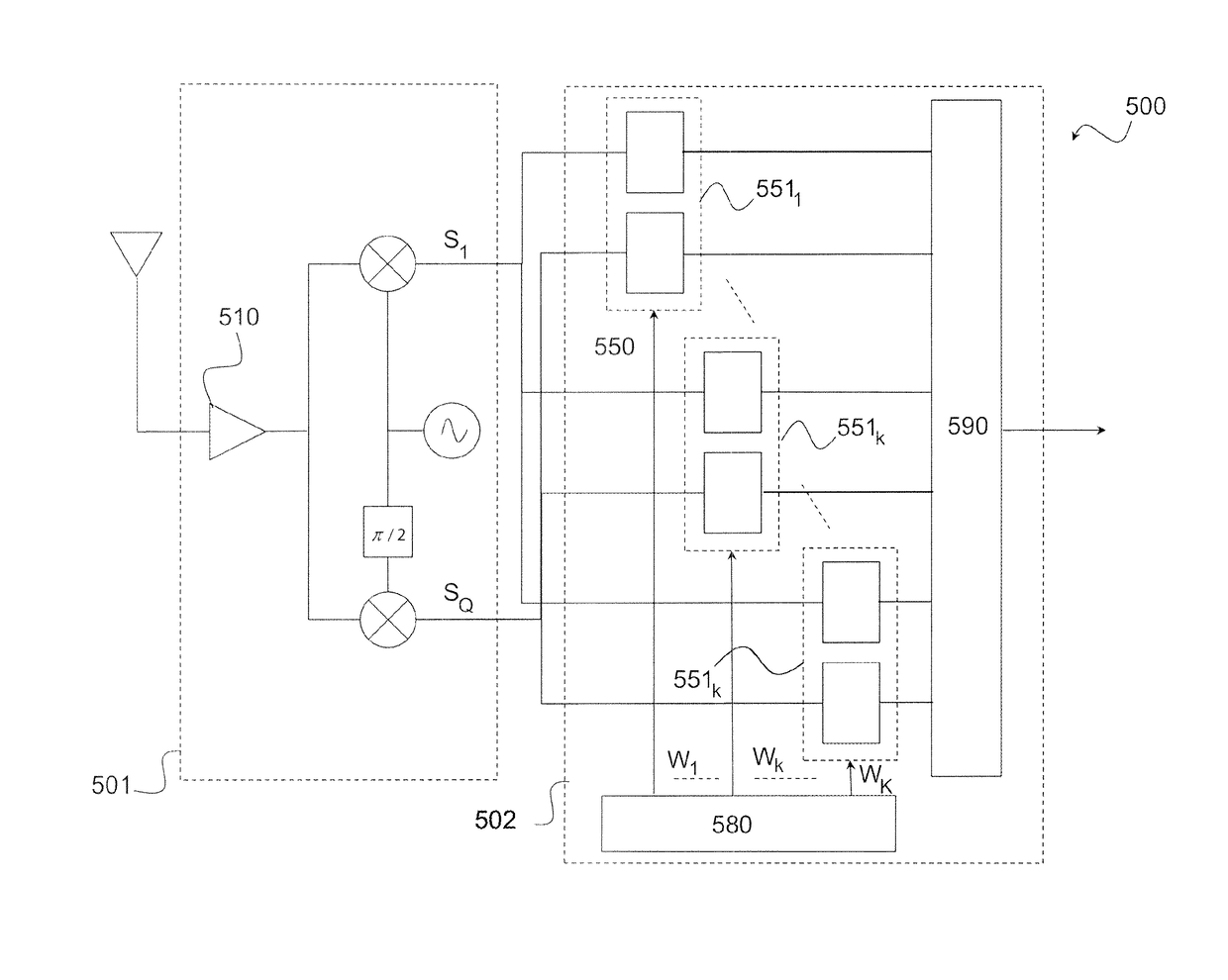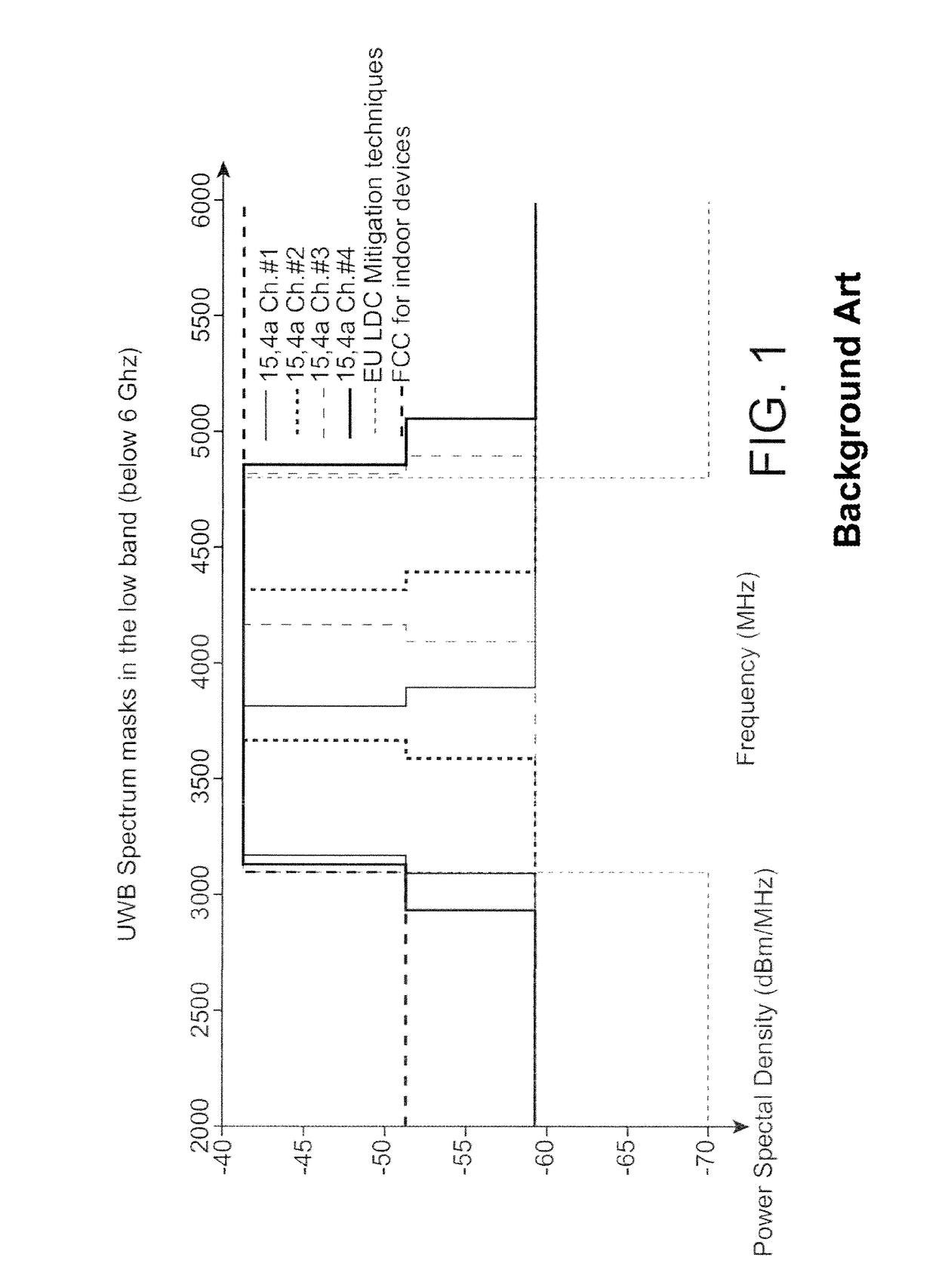Intermittent UWB receiver
a receiver and synchronization phase technology, applied in the direction of transmission, electrical equipment, etc., can solve the problems of not having a priori knowledge of the impulse response of the channel, operating continuously during the synchronization phase, and consuming energy
- Summary
- Abstract
- Description
- Claims
- Application Information
AI Technical Summary
Benefits of technology
Problems solved by technology
Method used
Image
Examples
Embodiment Construction
[0047]A receiver intended to receive a UWB impulse signal (IR-UWB receiver), such as the one described in the introductory part will again be considered thereafter. The UWB impulse signal is divided into transmission intervals, each transmission interval being itself divided into chips. A symbol (typically a binary symbol) is transmitted over a transmission interval by means of a sequence of unit impulses (which can be reduced to a single impulse) distributed on the different chips of the interval. The symbol modulates said sequence using a PPM and / or PAM (or even QAM) modulation.
[0048]FIG. 5 represents the architecture of an intermittent IR-UWB receiver according to an embodiment of the invention.
[0049]The receiver 500 comprises an RF stage 501, and a baseband processing stage 502.
[0050]The RF stage 501 comprises a low noise amplifier 510, one or more demodulation stages, to bring the received signal into baseband. For example, the RF stage can comprise a demodulation stage at an i...
PUM
 Login to View More
Login to View More Abstract
Description
Claims
Application Information
 Login to View More
Login to View More - R&D
- Intellectual Property
- Life Sciences
- Materials
- Tech Scout
- Unparalleled Data Quality
- Higher Quality Content
- 60% Fewer Hallucinations
Browse by: Latest US Patents, China's latest patents, Technical Efficacy Thesaurus, Application Domain, Technology Topic, Popular Technical Reports.
© 2025 PatSnap. All rights reserved.Legal|Privacy policy|Modern Slavery Act Transparency Statement|Sitemap|About US| Contact US: help@patsnap.com



